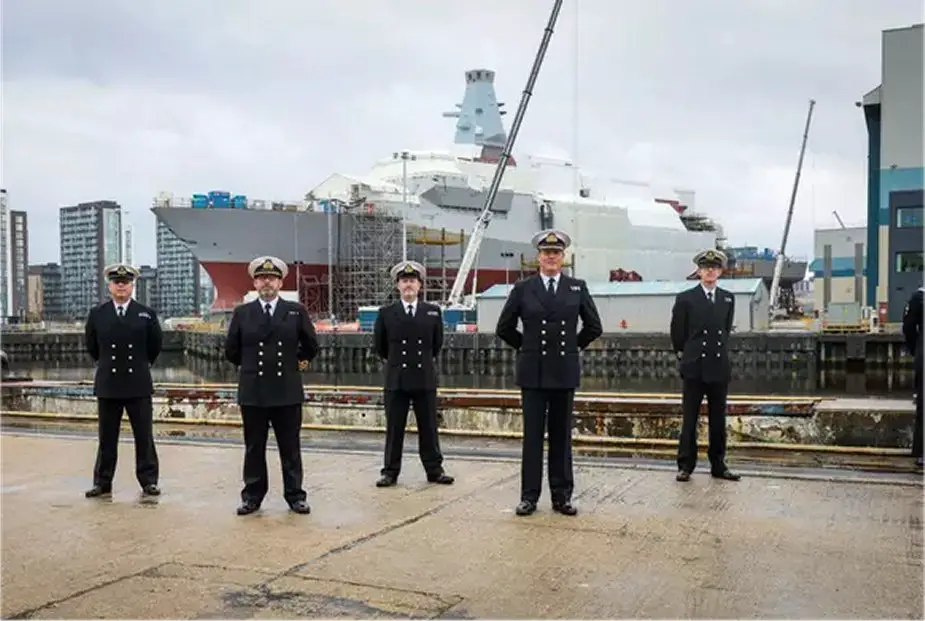Breaking news
Royal Navy orders five more Type 26 frigates from BAE Systems.
According to a PR published by BAE Systems on November 15, 2022, the UK Ministry of Defence has awarded a £4.2bn contract to BAE Systems to manufacture the next five City Class Type 26 frigates for the Royal Navy in Glasgow.
Follow Navy Recognition on Google News at this link
 Future Royal Navy's Type 26 frigate HMS Glasgow. (Picture source: Royal Navy)
Future Royal Navy's Type 26 frigate HMS Glasgow. (Picture source: Royal Navy)
The contract sustains more than 4,000 jobs across BAE Systems and the wider UK maritime supply chain. It also secures shipbuilding at BAE Systems’ facilities in Scotland into the 2030s. Up to £1.8bn of the new order will be spent in the supply chain, including £1.2bn with UK suppliers.
Type 26 is one of the world’s most advanced warships. It is designed for anti-submarine warfare and high-intensity air defence, but can adapt its role quickly to transport high volumes of humanitarian aid and house medical facilities.
Three Type 26 ships are already in build in Glasgow, with the first of class, HMS Glasgow, on track to enter the water later this year and be delivered to the Royal Navy in the mid-2020s. The construction of HMS Cardiff and HMS Belfast is also underway.
The Type 26 programme is a UK-wide endeavour, with more than 120 UK suppliers having already secured contracts linked to the new batch of frigates, including for steering gears in Dunfermline, gas turbines in Filton and maritime LED lighting in Cumbria.
The Company is investing approximately £15m in a new Applied Shipbuilding Academy in Glasgow to support the development of the entire workforce, from apprentices through to senior leaders.
In addition, BAE Systems has applied for planning consent to start construction on a new shipbuilding hall worth more than £100m to greatly enhance productivity on the Clyde to support the delivery of these eight ships and future orders.
The Commonwealths of Australia and Canada have selected the Type 26 design, which, together with the UK, provide an anticipated 32 ship programme across the three nations. Sharing build and transition into service lessons across all three programmes will benefit all parties in this multinational effort.
The frigates have a displacement of 6,900 tonnes, a length of 149.9 m (492 ft) a beam of 20.8 m (68 ft) and a top speed in excess of 26 knots (48 km/h). They have a core crew of 157 with room for a total of 208 and are designed for up to 60 days' endurance and a range of approximately 7,000 nautical miles (13,000 km).
The Royal Navy's version of the Global Combat Ship is referred to as the Type 26 frigate. This is equipped with the Type 997 Artisan 3D search radar and Sea Ceptor (CAMM) air-defence missiles launched via 48 vertical launching system (VLS) canisters. Additionally, 24 Mark 41 "strike-length VLS" cells are positioned forward of the bridge.


























